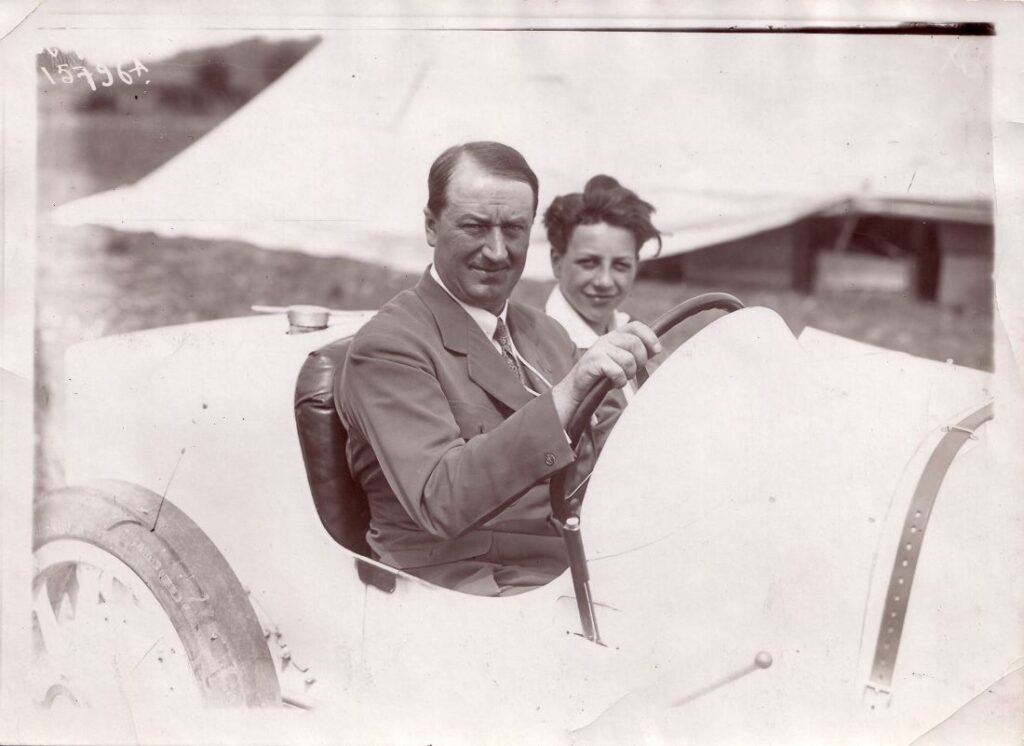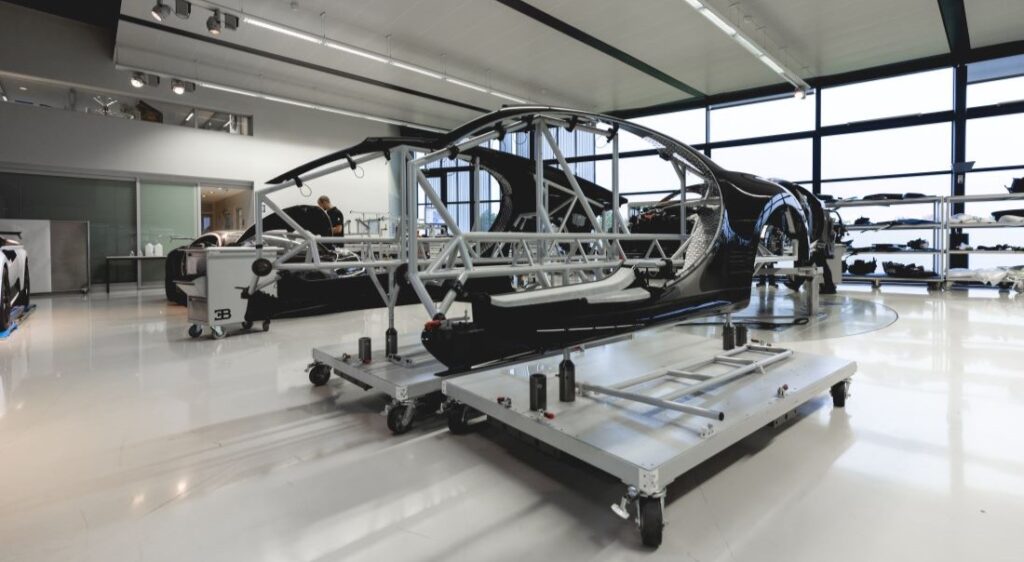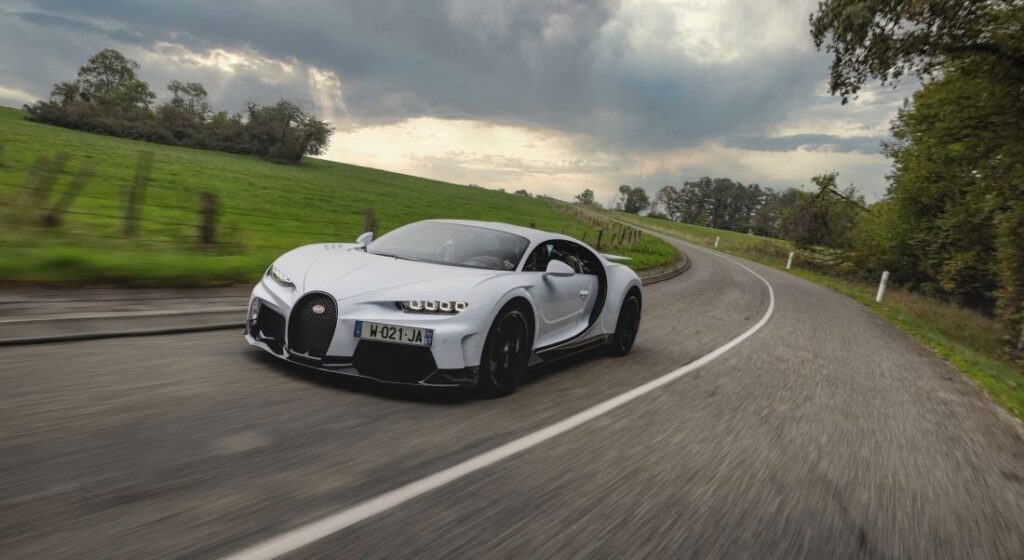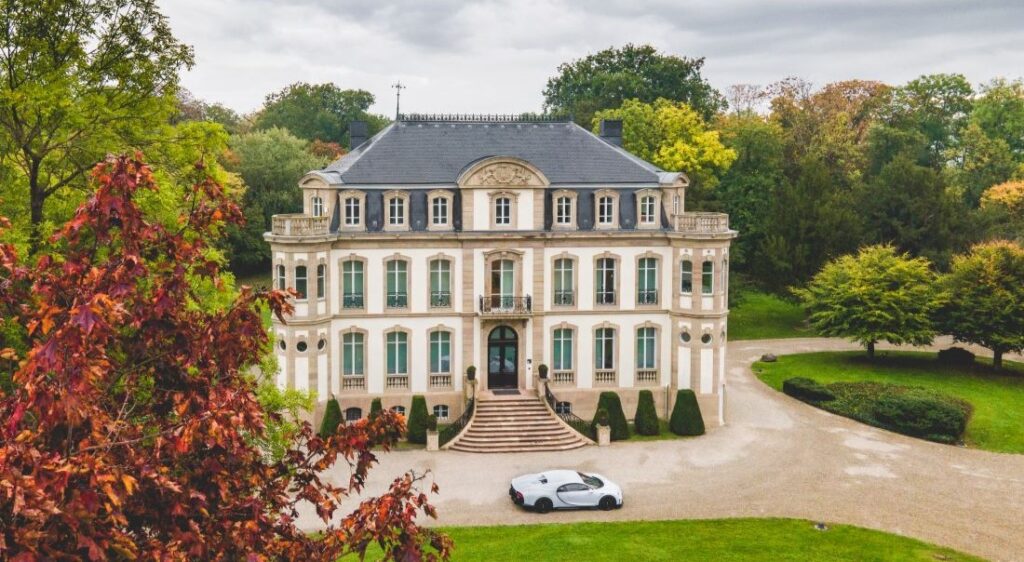This website uses cookies so that we can provide you with the best user experience possible. Cookie information is stored in your browser and performs functions such as recognising you when you return to our website and helping our team to understand which sections of the website you find most interesting and useful.
The House Bugatti Built: a marque of marketing and motors
By Rory FH Smith | 22 August 2023 | Cars & Yachts
Step inside the doors of Ettore Bugatti’s Alsace château and discover the driving force behind one of the world’s most exciting car marques

If Ettore Bugatti was alive today, there’s a strong chance he wouldn’t rank highly in popularity polls. More artist than scientist, Ettore – the founder of his eponymous car company – was well known for his ego and penchant for dismissing potential customers he didn’t deem worthy (or wealthy) enough to buy his cars.
Like many of today’s technically obsessed automotive moguls, Ettore was a details man; but he was also a showman and gifted marketeer. Obsessed with appearance, design, performance and status, it was these qualities that characterised the motoring masterpieces that carried his name.
“Loud in voice, high in colour, overflowing with life, a brown bowler sitting on the back of his head, he looked more like a horseman strayed among motor-cars,” wrote JA Grégoire in L’Aventure Automobile, in 1953. “Bugatti was pure artist; his only scientific knowledge resulted from experience, which increased with the years, and a natural mechanical ability aided by a gift of observation.”
Alongside machines, Ettore was a keen horse rider and would often travel around his production site on horseback, inspecting the work of the craftsmen and engineers from the saddle. With an unwavering belief that his way was the only way, Ettore designed and engineered countless creations in and outside of the motoring sphere – from trains, planes and automobiles to cutlery and cooking tools. But look beyond his eccentric and egotistical character traits, and you’ll find one of the greatest inventors of the 20th century, whose legacy still lives on in the form of some of the finest and fastest cars in the world.
AN AUTOMOTIVE GENIUS
When pulling up to the imposing gates and through the 15th Century archway ruin of Bugatti’s Château Saint Jean in the French town of Molsheim, nothing exemplifies the man’s overwhelming character more than the elaborate house he purchased to host and entertain his customers in 1928. First built in 1857 by the Wangen de Geroldseck family, the charming château was the jewel in Ettore’s arsenal of sales tools. Once guests arrived, often chauffeured in his personal Bugatti Type 41 Royale, they would be greeted on the steps of the chateau and shown to dinner. Unrelenting in his obsessive pursuit for perfection, Ettore even designed and engineered his own pasta maker, built his own henhouse to deliver freshly laid eggs, and created his own custom cutlery – all engraved with his initials.
“He was a marketing genius,” says former F1 racer-turned-Bugatti test driver Pierre-Henri Raphanel. “For example, Bugatti never produced oil, yet he would pour Castrol oil into a Bugatti oil tank, which was nicely designed, and sell it as Bugatti oil for three times the price. Now this is very normal, but 100 years ago, this was very clever.”
The grand interior of Château Saint Jean was restored and reinstated as the home of Bugatti by former parent company, the VW-Group, in the late 1990s. Bugatti has since moved into the hands of all-electric hypercar maker and relative newcomer Rimac, who purchased 55% of the Alsace company in 2021. Porsche owns the remaining 45%.
Further evidence of Ettore Bugatti’s business brain at work can be found on the iconic 1920s Type 35 racer, which Ettore equipped with wheels made from aluminium, not just because it was the lightest and strongest material around, but because no other car maker or garage could fix them in the event of a crash. For that, they’d have to come back to the man who made it.
Flanking the château lies a collection of converted stable blocks, each harbouring some of the greatest and most expensive Bugattis ever made. In one stable sits a gargantuan Type 41 Royale and a more modern Veyron, each of which cost nearly £1m when new in 1927 and 2005 respectively. Beyond the cars lie countless models showcasing every design and invention made by the marque’s founding father.

While the château and the surrounding buildings remain largely true to their original design and purpose, one area of the site is radically different to how Ettore left it when he died in 1947. Like a spaceship poised in the garden of the 19th-century château, the modern Bugatti factory site is a Bond-spec production facility that constructs the world’s finest automotive works of art. Inside there are no robots or production lines, just a handful of highly skilled engineers and technicians carefully assembling each car by hand.
Despite his death more than 75 years ago, Ettore’s meticulous attention to detail is widely practiced in the manufacture of modern Bugattis. Every inch of bodywork is painstakingly analysed before its approved, as the pursuit for perfection continues well into the company’s second century.
FAST TIMES
After a morning spent exploring and understanding every square metre of Bugatti’s unique headquarters, my afternoon is about experiencing it in action. Humming ominously outside of the house is a brand-new black and white Bugatti Chiron Super Sport. With the carmaker’s infamous 8.0-litre quad-turbo W16 engine on board, the Super Sport will accelerate from 0-62mph in just 2.4 seconds and on to a staggering top speed of 273mph all for the princely sum of £3.2m – if it were still for sale, that is. All 30 cars are already accounted for.
Grumbling out of the gravel driveway, I’m joined by British racing driver and Bugatti official test driver Andy Wallace, who sits patiently in the passenger seat. He’s humble, offering advice on directions and the best way to handle all of the Chiron’s 1,578bhp on a slippery roundabout in late October. Nothing, other than a quick Google search, would suggest that he was the man that set a record speed of 300mph in a Bugatti Chiron Super Sport 300+ in 2019, nor that he has won more than 25 international races since 1988.

“Just go for it,” he says, spotting an opportunity to open the Chiron’s up on a relatively straight section of road leading up into the hills around Molshiem. With the slightest tap of the right foot, the Chiron explodes, catapulting my head, neck and spine deep into the back of the quilted leather seat. Trees and road signs blur in my peripheral vision as I accelerate at warp speed, with only the horizon of the road surface visible, dead ahead. It’s all I can focus on, as behind my head the din of engineering witchcraft whirs, spits and screams as high-octane fuel ignites to propel the car forward with extraordinary force.
It’s a sensation like no other and, although cars like the Rimac Nevera and Automobili Pininfarina Battista are faster in a straight-line sprint, there’s no substitute for the majestic sound, smell and sheer force that Bugatti’s W16 engine generates. Once our driving tour of the Alsace countryside is complete and I descend back down to earth, I park up where I left off, outside the towering monument to Ettore Bugatti’s vision to create the world’s greatest cars.
While all Bugatti owners are offered a tour of the historic site during the purchase and production of their car, Château Saint Jean remains a mythical place in the car world. Like something ripped from the pages of a novel, this 19th-century château is the most unlikely yet magical setting for a company building incredibly complex cars.
Now 114 years old, Bugatti has led the way in both luxury and performance for more than a century. Ushering in a new, electric age, the Molsheim site will soon start to produce electrified Bugattis after a century of mastering the combustion engine. While the death of the monumental W16 engine is imminent, it is Bugatti’s ability to continuously defy the odds when it comes to automotive innovation that will keep this cherished marque at the front of the automotive line-up for a while longer yet.








